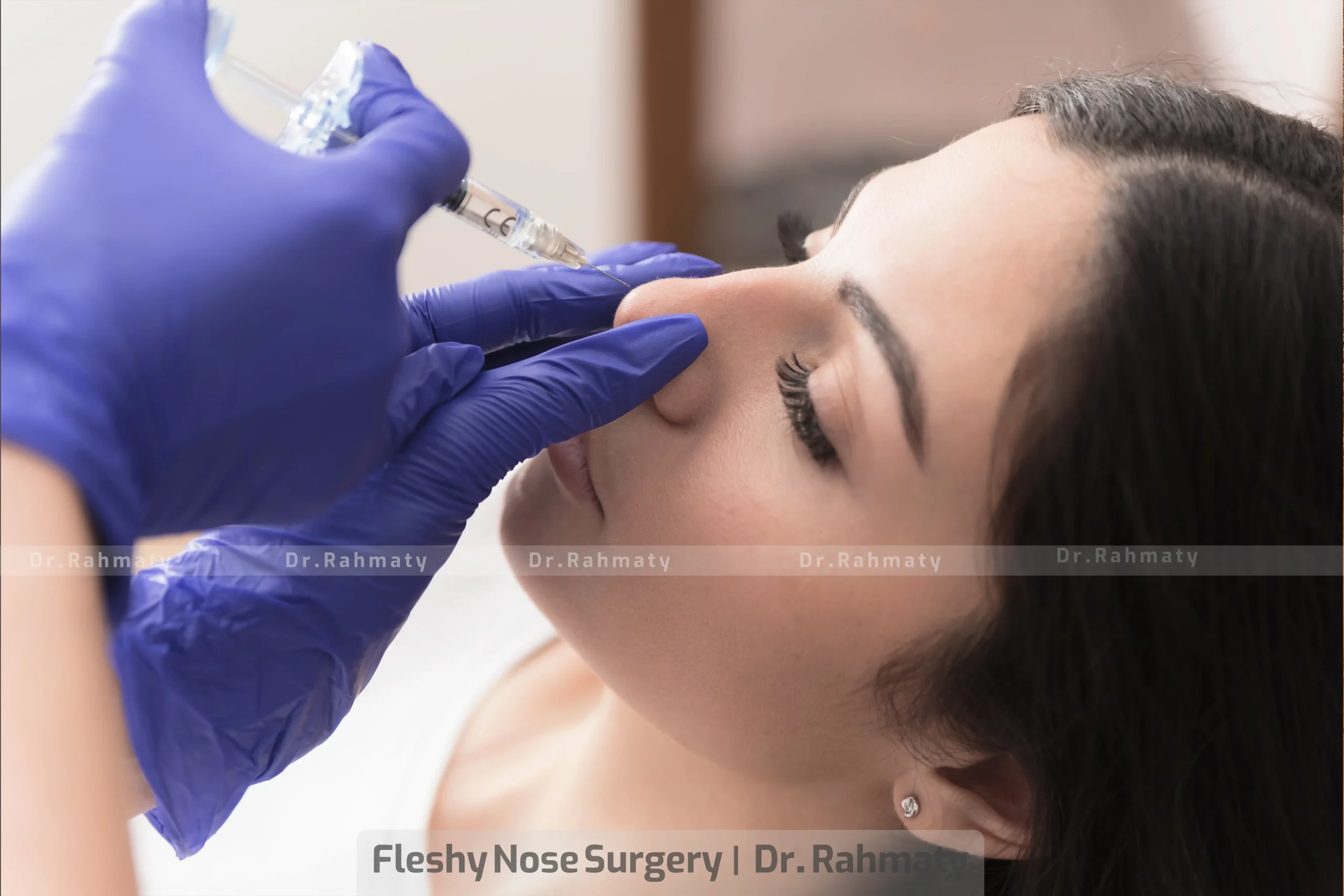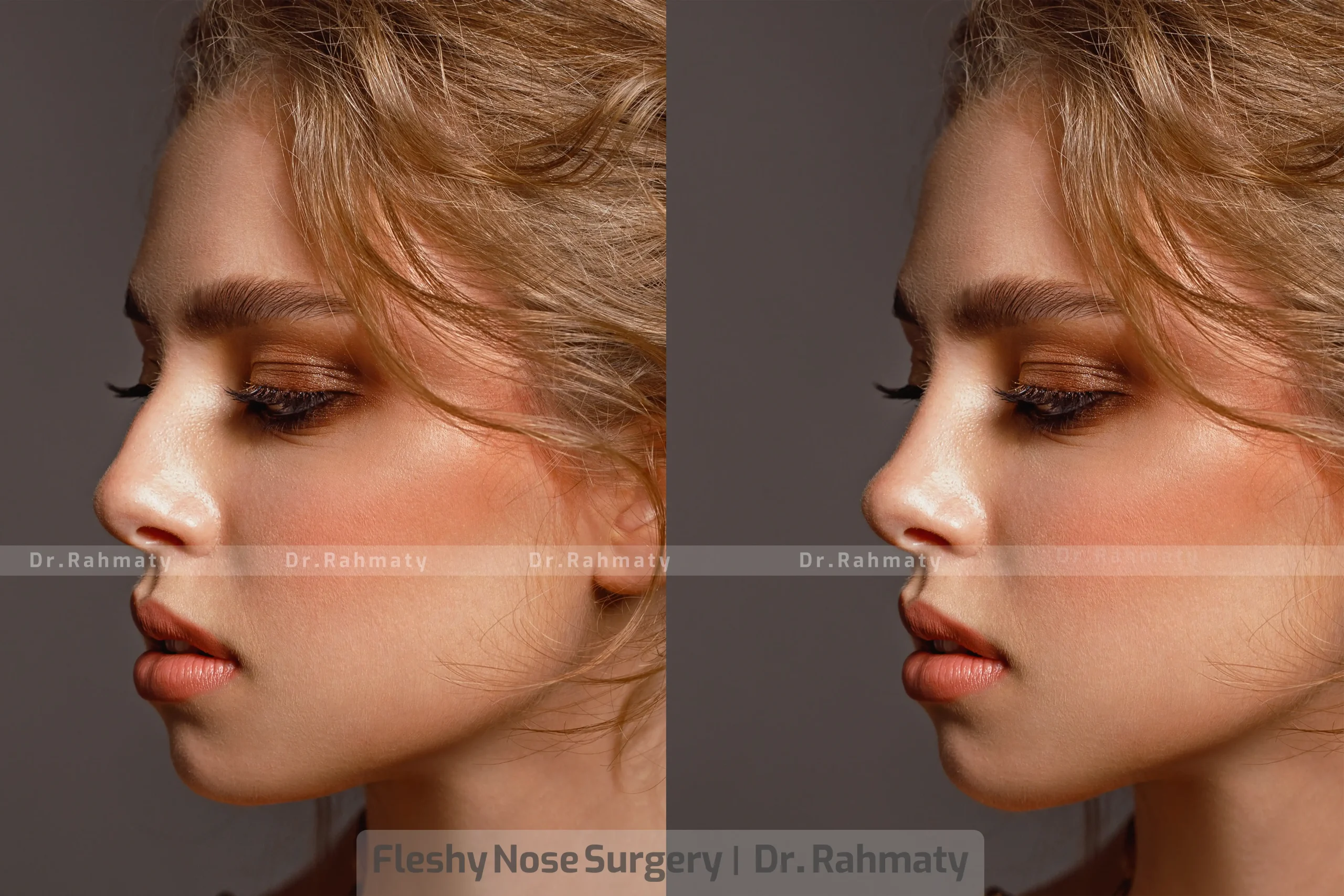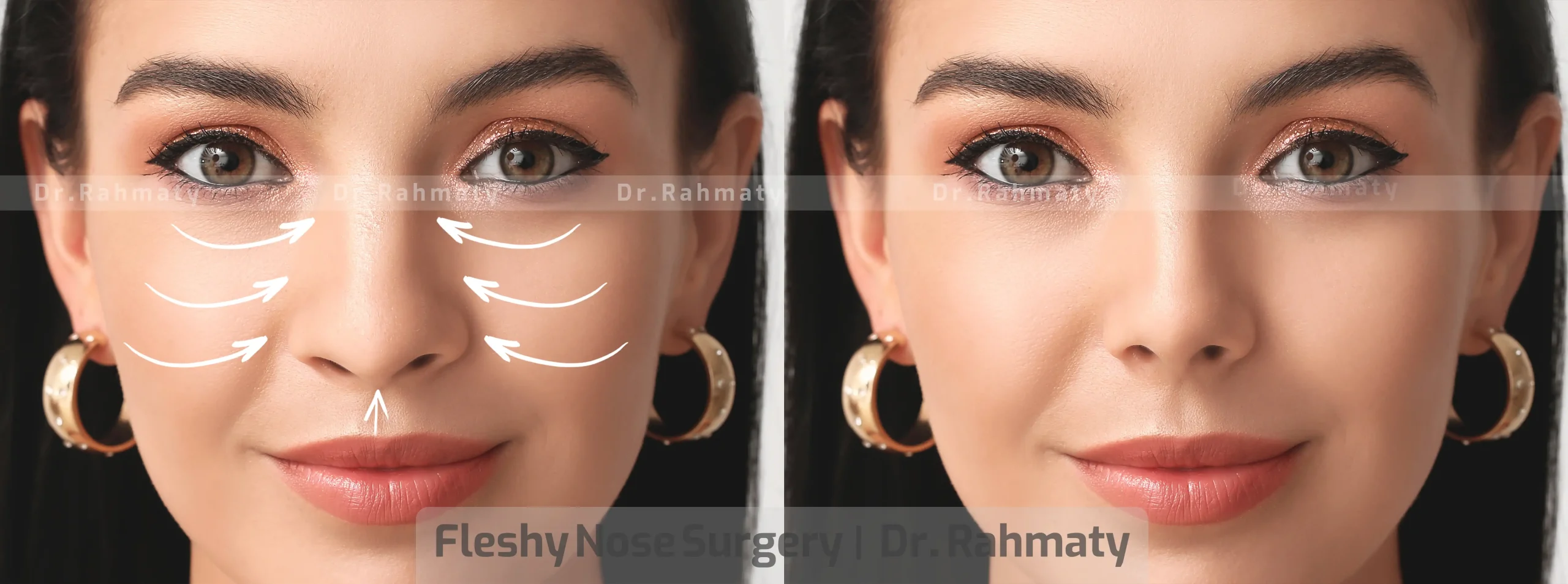Rhinoplasty is one of the most popular cosmetic surgeries that has attracted the attention of many people in recent decades. One of the most important factors to consider in rhinoplasty is the type of nose. Generally, noses are divided into two main categories: bony noses and fatty noses. In this article, we will explore the best rhinoplasty methods for individuals with fatty noses.
1. Features of Fatty Noses
Fatty noses are characterized by specific features such as thick skin and weak cartilage. These types of noses are often associated with oily and thick skin, which makes the nose appear larger than its actual size. One of the main challenges with fatty noses is that the thick skin makes it harder to shape the nose, and in many cases, the cartilage is weak, which may require more precise surgery and specific techniques.
2. Challenges of Fatty Nose Surgery
There are particular challenges in performing rhinoplasty on fatty noses that need to be considered before surgery. The main challenges are:
- Skin Thickness: The thick and oily skin in fatty noses makes it difficult for the surgical changes to be clearly visible. Therefore, the surgeon must exercise extra care when making structural changes to the nose in order to achieve a more natural result.
- Weak Cartilage: The cartilage in fatty noses is generally weaker than in bony noses. This can cause the nose to lose its desired shape after surgery or require further corrective procedures.
- Aesthetic Considerations: Fatty noses often need more precise and delicate shaping to ensure a natural and beautiful final result. Thus, choosing a skilled surgeon with experience in this area is crucial.
3. Different Methods of Fatty Nose Surgery
To perform rhinoplasty on a fatty nose, the surgeon must employ techniques that address the challenges of this type of nose. The two main methods for fatty nose surgery are:
a) Open Rhinoplasty
Open rhinoplasty allows the surgeon to precisely and clearly alter the internal structure of the nose. This method is more suitable for individuals with fatty noses who require significant changes to their nasal structure. In this method, a small incision is made under the nose, and the surgeon can easily reshape the cartilage and bones.
Advantages of Open Rhinoplasty:
- High Precision: The surgeon can work directly and more accurately on the internal structures of the nose to achieve a more precise result.
- Complex Corrections: This method is more suitable for more complex corrections, especially if the nose requires cartilage reinforcement or structural changes.
- Clear Structural View: The surgeon can see all the internal structures of the nose, reducing the chance of human error.
Disadvantages of Open Rhinoplasty:
- Visible Scar: Although the incisions are small, a small scar may remain under the nose.
- Longer Recovery Period: Due to the more invasive nature of this method, the recovery time may be longer.
b) Closed Rhinoplasty
In this method, incisions are made inside the nose, and the surgeon performs the necessary changes without making any external cuts. This method can be suitable for individuals with fatty noses who require only minor alterations.
Advantages of Closed Rhinoplasty:
- No External Scars: Since the incisions are made inside the nose, no scars will remain on the outer skin of the nose.
- Shorter Recovery Time: Due to the less invasive nature, individuals usually experience a shorter recovery period.
Disadvantages of Closed Rhinoplasty:
- Less Precision: Compared to the open method, the surgeon’s view is more limited, and making precise structural adjustments is more difficult.
- Suitable for Minor Changes: This method is generally more suitable for individuals who need only minor adjustments.
c) Cartilage Reinforcement Techniques
In many cases, fatty nose surgery requires cartilage reinforcement. Weak cartilage can cause sagging or improper changes in the nose after surgery. Therefore, surgeons may use techniques such as cartilage grafting or cartilage transplantation. These grafts are typically taken from the patient’s own cartilage (usually from the ear or rib) to strengthen the nose structure and ensure it remains in a more natural form.
Advantages of Cartilage Grafting:
- Better Stability: By reinforcing the cartilage, the chances of sagging or deforming the nose after surgery are reduced.
- More Natural Results: This technique helps the surgeon create a more accurate shape for the nose.
4. Important Considerations in Fatty Nose Surgery
- Choosing a Specialist Surgeon: Fatty nose surgery requires high precision. Choosing an experienced surgeon who has expertise in performing rhinoplasty on fatty noses is one of the most important factors that can affect the outcome of the surgery.
- Realistic Expectations: Patients should understand that changes in fatty noses might be less noticeable than in bony noses. The surgery should be performed in a way that maintains a natural appearance of the nose.
- Recovery and Aftercare: Patients must follow the surgeon’s recommendations during the recovery period to ensure the best possible result. This may include avoiding intense physical activities, taking prescribed medications, and caring for the incisions.
5. Conclusion
Fatty nose surgery presents unique challenges, but with the right technique and a skilled surgeon, excellent results can be achieved. Both open and closed methods have their respective advantages and disadvantages, and the choice of the most suitable method depends on the type of nose, its specific issues, and the surgeon’s experience. Ultimately, with the right decision and realistic expectations, rhinoplasty can be a valuable option for improving appearance and boosting confidence.
If you are also looking for fatty nose surgery, it is advisable to consult with a specialist to evaluate your goals and ensure the chosen method is safe and appropriate. You can also book an appointment with Dr. Rahmati and benefit from services such as rhinoplasty using the open or closed method.
Additionally, if you wish to increase your knowledge of rhinoplasty techniques, you can read related articles.






